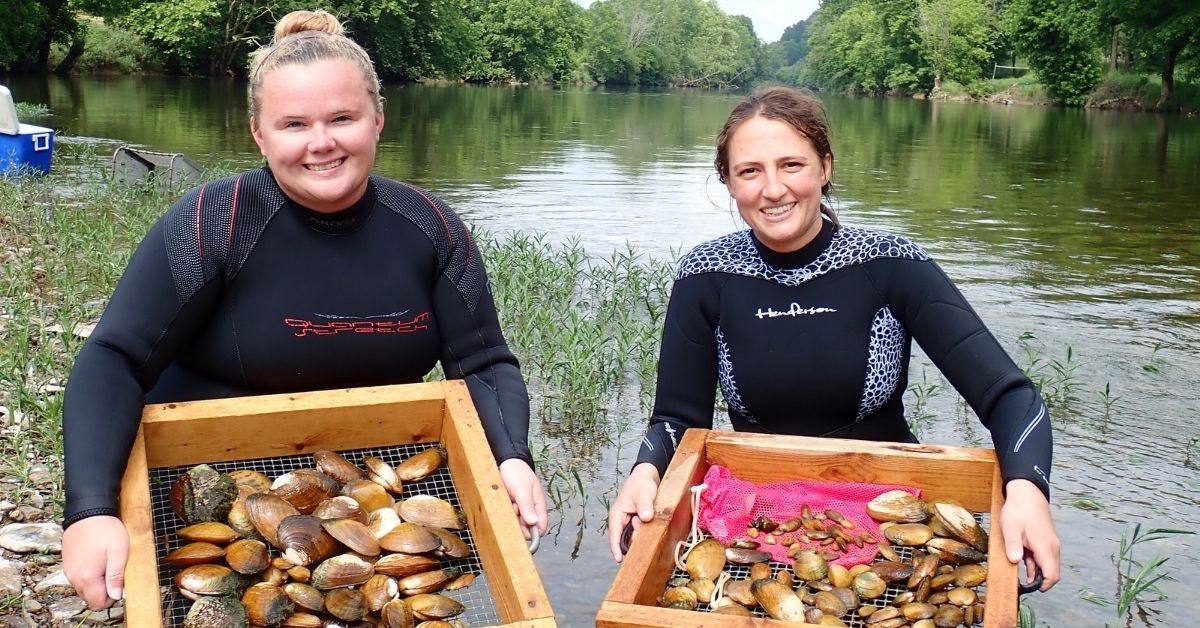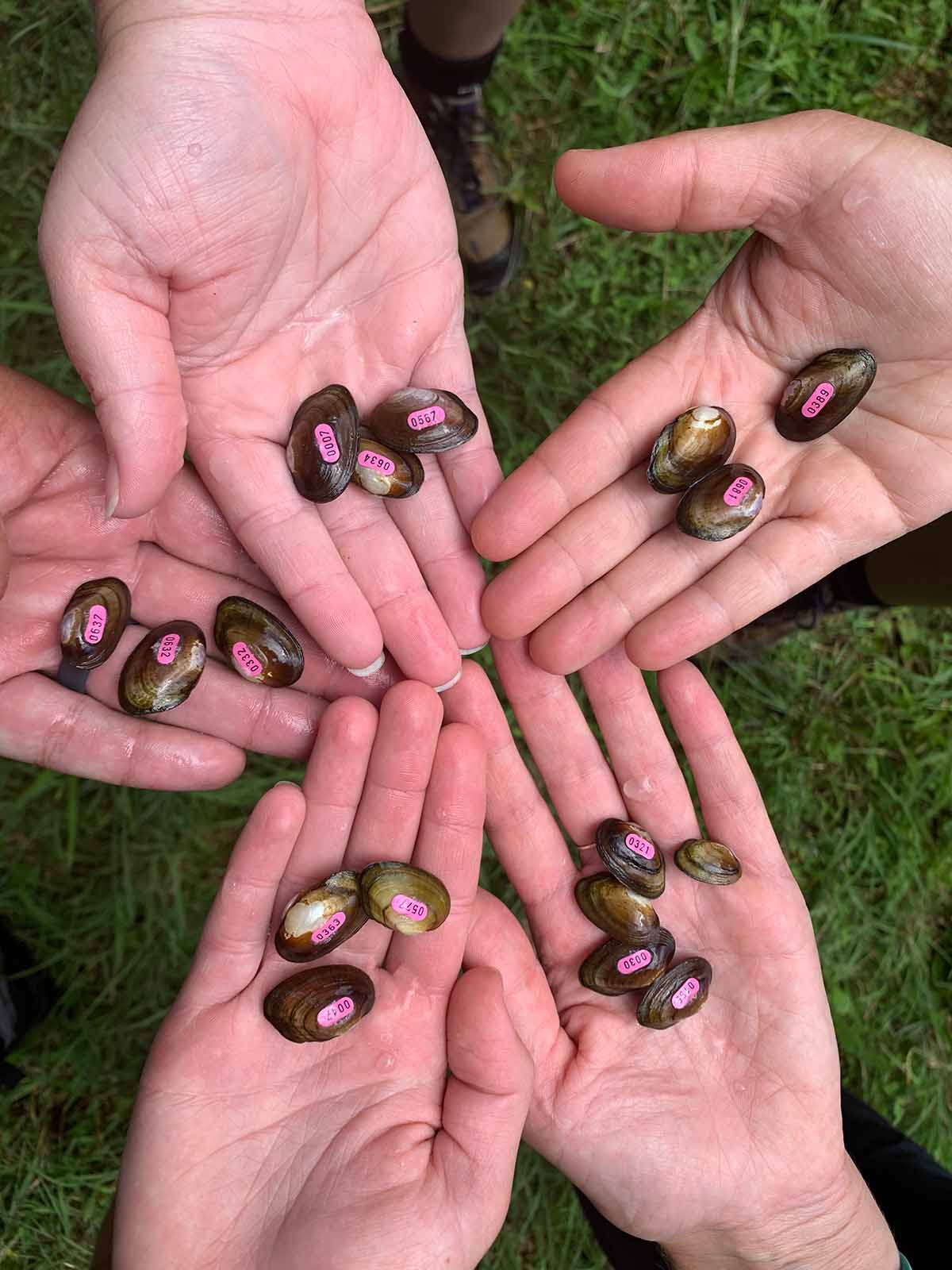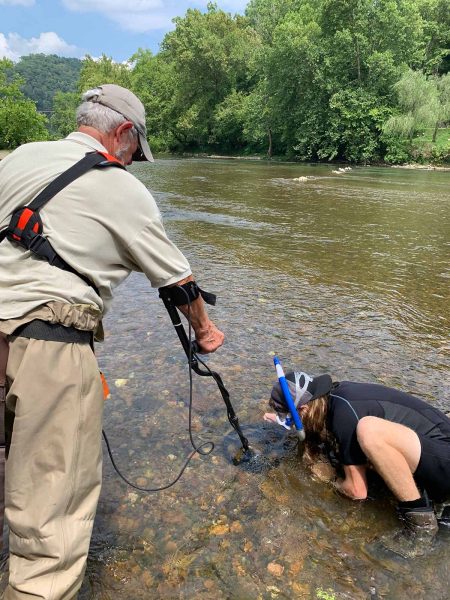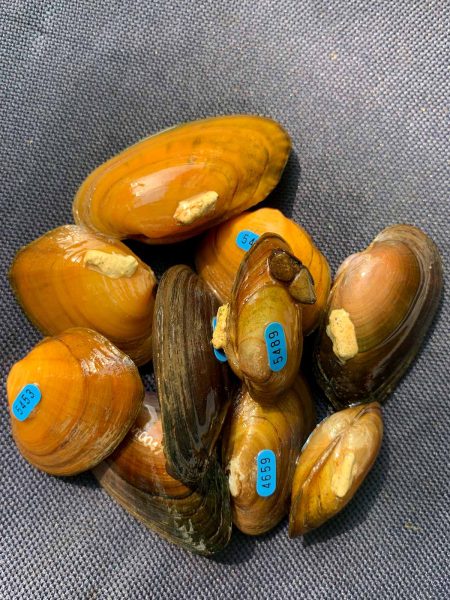Mussel cultivation advances and water quality improvements in many waterways allowed the Virginia Department of Wildlife Resources (DWR) to initiate a program to reverse the decline and actively recover Virginia’s freshwater mussels. The first step in accomplishing this task was creating the Aquatic Wildlife Conservation Center (AWCC), a facility located at DWR’s Buller Fish Cultural Station near Marion, Virginia.
Established in 1998, the AWCC is used to hold, propagate, and grow mussels. Adult mussels collected as broodstock are housed in round tanks containing a mix of gravel and pebble similar to that found on the stream bottom. The AWCC also holds and collects an assortment of fish, such as bass, darters, and minnows, which serve as hosts for many mussel species.
Mussel Cultivation
Glochidia (mussel larvae) collected from the broodstock are used to infest host fishes and cultivate young mussels. The AWCC has successfully produced 39 species of freshwater mussels including 19 federally endangered species and 6 state listed species. In the past 16 years, over 150 thousand juvenile mussels (large enough to be individually marked) have been released into Virginia’s Clinch, Powell and Holston Rivers.
In partnership with government, business, and public organizations, six target reaches were developed to augment mussel populations in the Tennessee drainage of Virginia. These reaches were selected because they still have good species diversity and water quality. By introducing propagated mussels on annual basis, DWR hopes to augment self-sustaining populations of several endangered species.
“Musselrama” Surveys
Intensive benthic surveys provide qualitative and quantitative data in identified restoration reaches of the Upper Tennessee River Basin. These surveys help biologists to identify areas of greatest conservation need and best available habitats to restore species.


Mussels Are Cultured and Stocked by the AWCC to These Identified Reaches
Mussels are marked to specify a cohort’s birth year and genetic source prior to leaving the propagation facility. These tags are used in subsequent monitoring efforts to track growth, survival, and recruitment of more than 30 species stocked by the AWCC in Southwest Virginia.

Tennessee Bean Release to North Fork Holston River.
Passive Integrated Transponder (PIT) Tag Monitoring
This new technology is used on a portion of each stocked cohort. The small tags are adhered with dental cement that is not detrimental to the mussel’s outer shell. Using an antenna, much like a metal detector, biologists can efficiently and safely locate and check on the stocked mussels to inform management.
- Biologists search for PIT-tagged mussels in the Clinch River.
- Recaptured mussels stocked by the AWCC.



